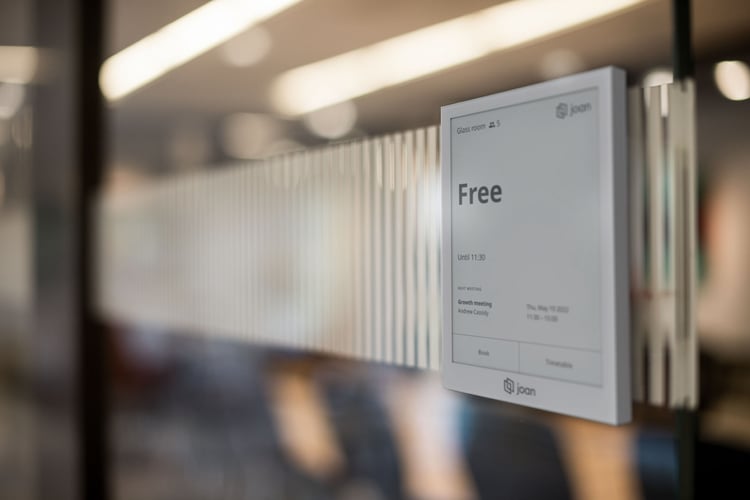These days, organizations are facing a pinnacle transition. This transition isn’t something companies can control, other than bribing employees to retire later than planned… The baby boomer generation is retiring. Your most experienced employees are throwing in the towel, settling down to enjoy the fruits of 50 years of labor. You’re going to need talented individuals to take their place: the cream of the crop, crème de la crème, to keep up your company’s momentum. What’s more, you need the right workplace environment to bring the best out of the employees you have and improve employee retention.
It’s time to consider your workplace experience. Is it enticing? Appealing? Could it catch a fish on a hook? Most particularly, does it engage the employees?
Parts of the whole
Every day, office management’s senses are flooded with advertisements for products and tips that will help the company thrive. However, the key point is that most of these advertisers are promoting a single solution. Unfortunately, a single solution won’t cut it. It’s like having jam on bread without the peanut butter. As tasty as the jam is, the flavor just isn’t the same as the whole. In this article, we’re going to break down the individual pieces that make a world of a difference to your office — when used together.
The space
Around the world, office spaces are evolving. Employees are advocating for hybrid work models, and many business leaders are listening. Recent data by Gallup reveals that a significant number of employees prefer quitting their jobs rather than returning to the office full-time. With "remote work" becoming the latest buzzword, numerous companies are reimagining their real estate to be either smaller or more adaptable than in the past.
The work environment your company provides can greatly influence how employees manage their projects. Thoughtfully designed team spaces, whether they include isolated conference rooms or open, flexible workspaces, can significantly enhance productivity and efficiency.
Ultimately, it's crucial to design your space to accommodate various types of work. Everyone performs their best in different settings, and the most effective workspaces are those that cater to diverse needs.
The technology
A huge part of making functional, flexible spaces is having technology that works. A 2024 report by Tech.co highlighted that technology issues are more disruptive to productivity than employees taking sick days. The problem isn’t just malfunctioning technology — it’s also missing technology. Companies invest in technology to improve productivity and efficiency. Yet, imagine if a company never invested in an instant messaging system. Employees would leave their desks and traverse the office way more than they do.
Or, even worse, they wouldn’t bother to ask questions or follow up with their teammates. Now, imagine a hybrid workplace without assigned seating… without a desk booking solution. Again, employees would wander the office, wasting valuable work hours searching for an available place to work. The Joan Desk booking solution empowers employees to reserve a workstation with the tap of a button before even arriving at the office. With the help of an app, team members can book desks together or reserve out-of-the-way workplaces for focus time. The goal of technology isn’t to maintain the office experience — it’s to improve it.
Therefore, why not invest in a meeting room management system that’s proven to all but eliminate squatters, overrun meetings, and a whole lot of wasted time? Joan devices are the most reliable room booking displays on the market, along with a one-of-a-kind wireless installation and intuitive user interface. Together with Joan Room booking solution that syncs with the calendars you already use for scheduling meetings, you can create a seamless workplace management experience.

The people
Improving the workplace experience means supporting the people who work there. The more engaging an environment is, the more engaged the inhabitants are. The better their experience, the greater the employee satisfaction. Still, there needs to be a level of guidance — overseeing eyes that nudge people to interact with their surroundings and peers. For example, managers should coordinate their team members to meet on-site on the same days.
Having team members at the office at the same time capitalizes on team-building opportunities, develops trust, fosters loyalty, and boosts employee engagement. Still, the office environment plays a huge role in smoothing team interactions. As mentioned earlier, faulty technology can have a serious impact on the workday. It’s not just hours that are wasted when projectors fail, but also the loss of motivation when employees struggle with poorly designed systems. Support the natural workflow by investing in the right tools and resources. If you’re not sure what the right tools and resources are, remember: that employee feedback is your greatest resource when uncovering employee needs.

A holistic approach to the workplace experience
Don’t get stuck on the details. When you narrow your vision, you lose track of the whole. When deciding what technology you need, keep the space in mind, along with the people and their needs. All of these aspects are interconnected, with none working properly without the other. This interdependence is why employees still need office space. There’s no place like the office to interact with your colleagues, just as there’s no easier place to build company culture. Invest in office systems that have been proven to generate a positive experience. Nay, a great experience.
Providing connected workplace solutions designed to enhance your team's experience and optimize your workspace is essential. MyJoan is the holistic workplace experience platform that your business needs. Joan solutions and devices are built for this new age of flexibility where spaces change by the minute.
Find out how Joan can enhance the workplace experience by contacting our team.
Insights that keep your office running smoothly
Fresh content on productivity, space management, and the future of work. Perfect for managers, admins, and busy teams.
Join thousands of workplace professionals who already read the Joan blog. Unsubscribe anytime.